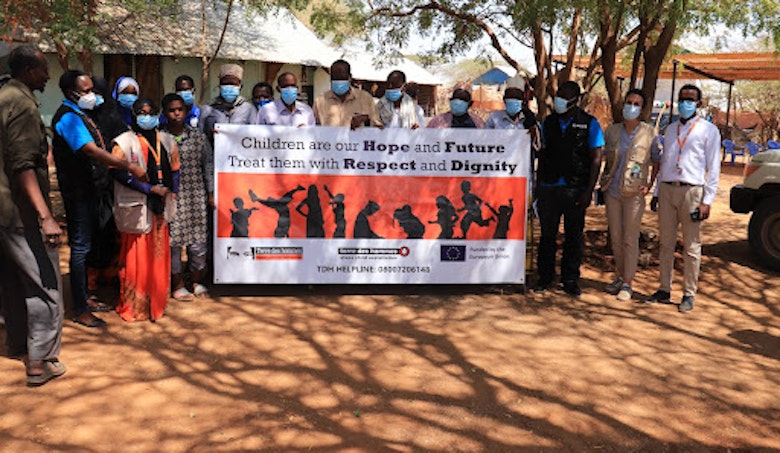Child Protection Assessment Report
The Dadaab refugee complex in Kenya consists of three camps namely Dagahaley, Hagadera and Ifo. The first camp in Dadaab was established in 1991. As of January 2022, a total of 234,0401 refugees and asylum seekers resided in Dadaab Refugee Complex. More than half of them (56%) are children. Most of these children in the refugee camps are survivors of sexual and gender-based violence, unaccompanied minors in need of alternative care, adolescent mothers or children having to look after their families. Moreover, the vulnerable children and families are particularly at risk: they have inadequate access to medical care, that directly impact children’s well-being.
Key findings
In January 2022, TdH conducted a child protection assessment in Dadaab through IMPACT Initiatives to inform evidence- based strategic planning among child protection actors through the provision of relevant information on protection needs, vulnerabilities, gender dynamics and access to protection and other multi-sectoral services of refugee and asylum seekers children in the Dadaab Refugee Complex.
Findings from the individual interviews, key informant interviews and focus group discussions (FGDs) indicate that there are different groups of vulnerable refugees and asylum seekers children in Dadaab. The most common groups of vulnerable children were children with disabilities, children with chronic illnesses, children living in extreme poverty conditions, separated or unaccompanied children, orphans and children living with single parents. In particular, 20% of girls and 21% of boys from the individual interviews were reportedly living with a disability. The vulnerable children reported experiencing various challenges with difficulty in accessing education and health services being the most reported challenges .
This assessment reveals that some children in Dadaab face violence, maltreatment and negative practices. From the individual interviews, 29% of girls and 25% of boys reported having faced violence, maltreatment or negative practices at least once in their lifetime. FGD participants, caregivers as well as key informants (KIs) reported that some vulnerable children had faced physical and sexual violence among other protection concerns. These children were reportedly in need of psychosocial support, education, health and counselling services.
Findings from this assessment reveal that some children did not have capacity to deal with protection concerns. When asked if they knew how to protect themselves from child abuse, 14% of girls and 11% of boys reported that they did not know what to do when they were harmed or abused. On the other hand, of the children who reported knowing how to protect themselves from child abuse, 61% reported that they avoided being alone and 58% reported talking to adults that they trusted whenever they perceived being exposed to the risk of being harmed.
Caregivers and key informats reported knowledge of several measures in place to prevent or reduce chances of abuse or harm on children. For instance, training on protection concerns and referral pathways were reportedly offered in Dadaab.
How humanitarian aid is delivered may directly affect access to the assistance. This assessment found out that some children of different ages, gender and vulnerable groups perceived being at risk when they or their caregivers received humanitarian assistance. In particular, 35% of children reported having ever feared to be discriminated by other refugees when receiving humanitarian assistance. Others reported fearing experiencing physical violence (26%), verbal harassment (12%), sexual violence (9%) and 12% being asked to pay bribes. In addition, FGD participants perceived children being exposed to discrimination, bullying, physical and sexual abuse, gender-based violence and disrespect when receiving humanitarian assistance.

